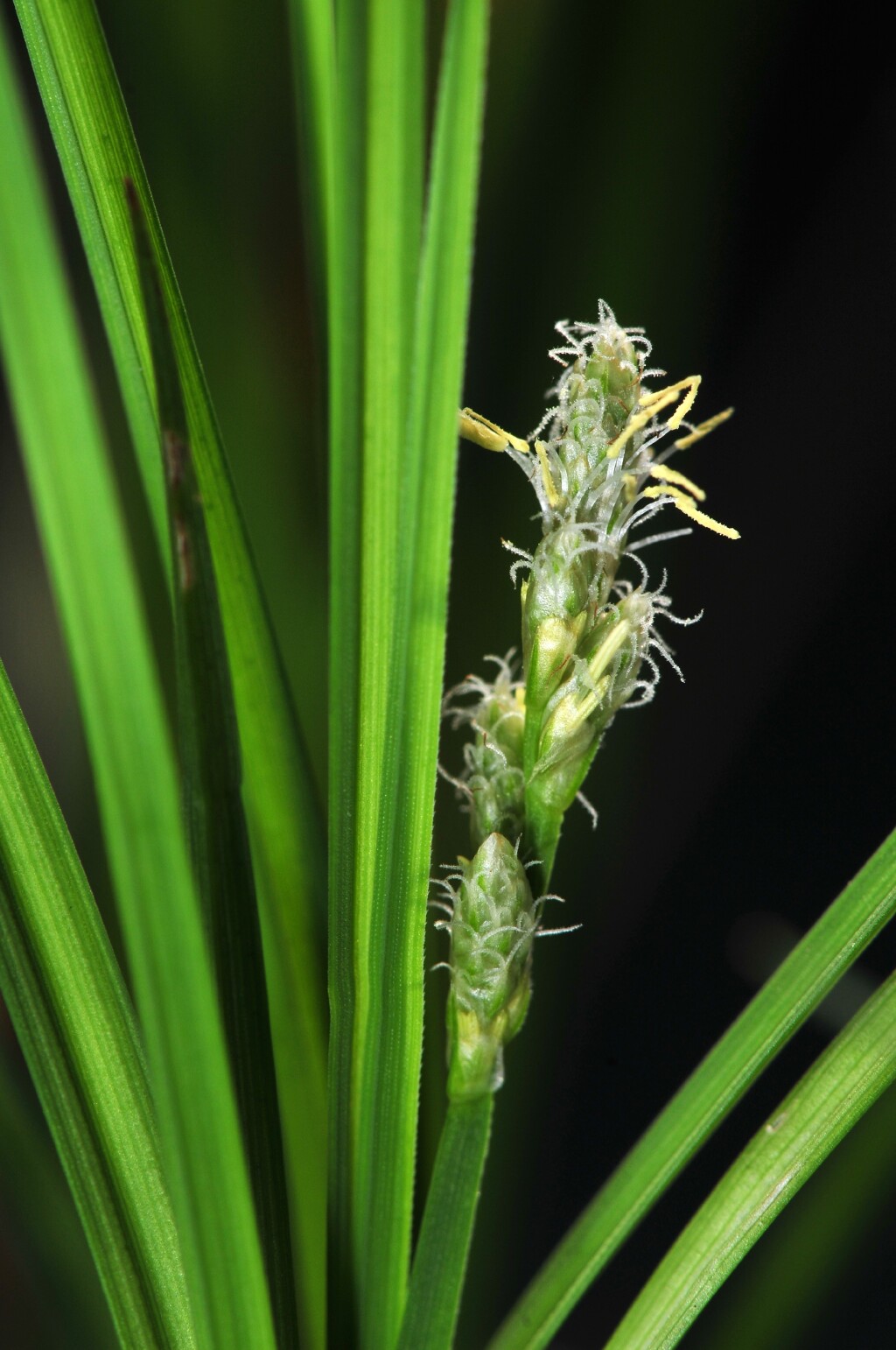Carex canescens
L. Short SedgeRhizome short; shoots loosely tufted. Culms erect, trigonous, usually scabrous above, 5–30(–50) cm long, 0.7–1.3 mm diam. Leaves shorter than or equalling culms, 1.5–4 mm wide, soft-textured, pale green or mid green; sheath pale brown; ligule obtuse to rounded. Inflorescence small, erect, 1–3(–5) cm long, with 3–8 spikes solitary at nodes; lowest involucral bract shorter than inflorescence. Spikes sessile, ± contiguous, erect to spreading at maturity; spikes with female flowers above male flowers, 0.5–0.9 cm long (uppermost spike occasionally with additional female flowers at the base); glumes obtuse to acuminate, occasionally shortly mucronate, glossy hyaline, often tinged yellowish, with green or pale brown midrib (often very faint), pale yellowish green; female glumes c. 2 mm long; utricles 2–3 mm long, 1.0–1.5 mm diam., ovoid to ellipsoid, strongly several-nerved, minutely colliculate, often scabrous on margins of shoulders, pale brown or yellow brown; beak 0.2–0.5 mm long, with apex notched or shortly split abaxially, minutely scabrous; style 2-fid. Nut ovoid to ellipsoid, lenticular, pale yellow-brown. Flowers summer.
GipP, HNF, VAlp. Also NSW, Tas. New Guinea, Europe, Asia, North America, South America. Locally frequent near pools and streams of the Bogong High Plains (e.g. near Mt Cope) and Baw Baw plateau, but uncommon elsewhere in the alps (e.g. Snowy Range, Cobberas). It is the only bipolar Carex species with an austral distribution which is not limited to only one continent.
Carex canescens is a variable species. Australian populations are sometimes placed into the C. canescens subsp. canescens, which has a circumpolar distribution. This subspecies is itself variable, with many varieties and forms having been described in the subspecies.
Readily recognised by the soft-textured, often pale green leaves, sessile short spikes, fruiting spikes resemble small pine cones, and the minutely colliculate utricles.
Wilson, K.L. (1994). Cyperaceae. In: Walsh, N.G.; Entwisle, T.J., Flora of Victoria Vol. 2, Ferns and Allied Plants, Conifers and Monocotyledons, pp. 238–356. Inkata Press, Melbourne.
 Spinning
Spinning
